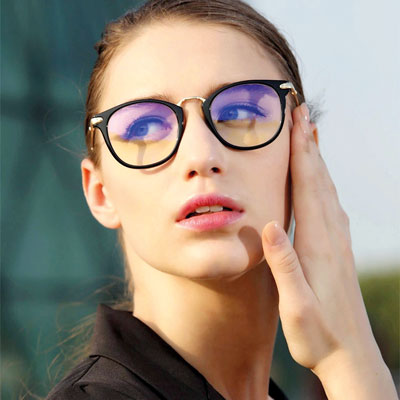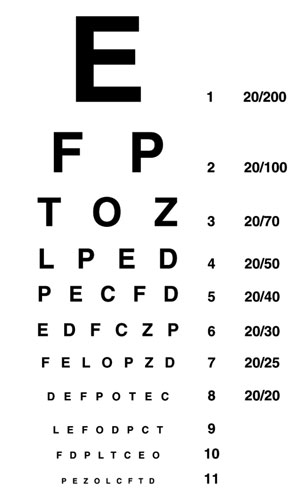Reply To:
Name - Reply Comment
 Caring for your eyesight is very important. Defects and imperfections can cause hindrance to an individual’s eyesight. Eyesight weakens with age too. These problems are commonly addressed by using spectacles (or eye glasses). Dr.M. Wijetunge, Retired Consultant Eye Surgeon of the Ragama Teaching Hospital, answered questions posed by the public on eyesight, whether one needs spectacles and the importance of obtaining them.
Caring for your eyesight is very important. Defects and imperfections can cause hindrance to an individual’s eyesight. Eyesight weakens with age too. These problems are commonly addressed by using spectacles (or eye glasses). Dr.M. Wijetunge, Retired Consultant Eye Surgeon of the Ragama Teaching Hospital, answered questions posed by the public on eyesight, whether one needs spectacles and the importance of obtaining them.
Do I need spectacles?
The answer to that question depends on several tell-tale signs that give enough hints that you should visit your Ophthalmologist. Small kids often sit too close to the TV screens when watching television. According to Dr. Wijetunge, this often happens when the child fails to see long distances clearly. This is often misconceived as habit, but in reality their eyes need to be checked as prolonged negligence could worsen eyesight.

Complaints from kids that they can’t read the black or whiteboard when sitting at the back of the class are also a common indication that the child might
require glasses.
“Constant headaches, eye discomfort, watering eyes, constant blinking, squinting (when finding it hard to see things clearly) and finding it hard to read unless the book has to be held at a distance away from the eye are some of the signs to look out for,” warned
Dr. Wijetunge.
Eyesight is also said to weaken when a person reaches 40 years of age; which is known as Presbyopia.
These symptoms signify the need for a vision check- up where one’s eyes will be tested and spectacles will be prescribed by the doctor if the requirement arises. Such a need is confirmed through a vision test. Some people can identify objects at short distances, but not those that are far away. Some people might experience the reverse. Some people might fail in both. These are due to refractive defects in the eye which can be corrected by wearing spectacles.
Purpose 
Spectacles are worn for different reasons, but all spectacles serve the purpose of enabling the patient to see well. Spectacles with the appropriate lenses, to correct a defective sight, will be recommended upon visiting an Ophthalmologist.
Dr. Wijetunge equalized the human eye to a camera. “Light rays fall on the retina. When a patient is able to see short distances, but has difficulty seeing long distances, it is known as ‘myopia’ or more simply short sightedness. In this condition, the eye greatly focuses on light rays causing them to fall in front of the retina rather than on the retina. So the patient can only see things at a short distance. This condition is corrected by the glasses that contain concave lenses which cause the light rays to focus onto the retina,” he explained.
Dr. Wijetunge further described that when the light rays are focused less than usual, this caues the light rays to fall beyond the retina. These people have long sighted vision. “This condition is known as long-sightedness or ‘hypermetropia’. Patients with this condition are prescribed glasses with convex lenses which corrects this defect,”
he said.Another condition known as astigmatism can affect eyesight according to the retired eye surgeon. “Astigmatism is caused by a defect in the curvature of the cornea of the eye. This is corrected by the prescription of glasses known as cylinders,”he explained.
It’s all in the lenses
The most important and the main parts that fit the rimmed framework to make up a pair of spectacles are the lenses. It is also the part of the glasses that correct your visionary defect enabling better eyesight through the correction of the defect. The doctor listed out some types of lenses that are commonly used. “There are various types of lenses. The variety includes concave lenses, convex lenses, bifocal lenses and varifocal lenses,”
he said. As previously mentioned concave lenses are generally prescribed for shortsightedness and convex for long-sightedness. Bifocals are lenses that contain 2 parts with different focal lengths which improves a person’s near vision through one part and improve long distance vision through the other.
Varifocals are lenses that allow both long distance vision and near vision and all lengths of distances in between. This is used to correct defects such as presbyopia which is far sightedness caused by the loss of elasticity of the lens of the eye that occur typically in middle and old ages, commonly at the age of 40.
Vision tests
When a person first complains that eyesight seems to be weakening they are subjected to the most common visual acuity test which is the Snellen’s Chart. This test determines the strength of eye sight and helps the ophthalmologist decide whether glasses are needed. There are other tests such as refraction test, pin-hole test that are used to confirm defects in the eye.
Caring for your spectacles
Caring for the glasses that help care for your vision is important. There are a few things that have to be kept in mind when using glasses. They may be small things, but are important to keep your glasses fully effective and functional. Dr. Wijetunge explained that it is important to avoid keep your glasses scratch free. Washing glasses with mild soap and water is a way to keep your glasses clear. It is never advised to just use any type of cloth to dry the glasses. The glasses are usually provided with a cloth that should only be used in wiping your glasses,” he explained. It’s also recommended to remove the specs using both hands instead of with one hand, Dr. Wijetunge mentioned. He explained that using only one hand when wearing glasses could make them lopsided.